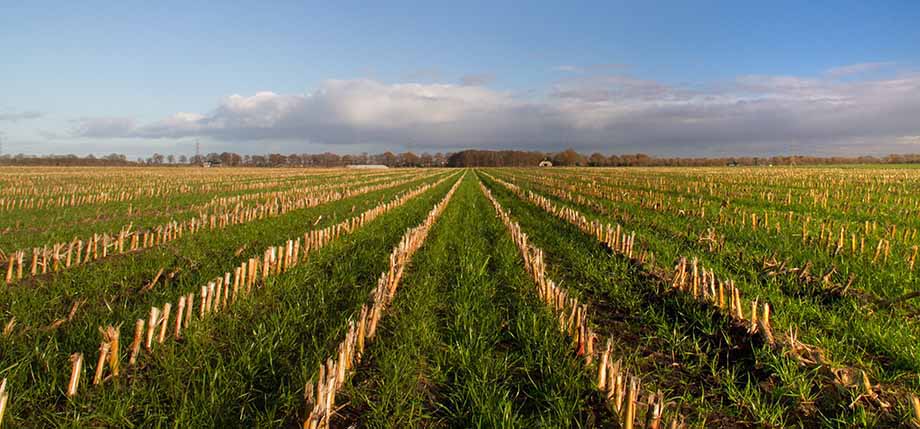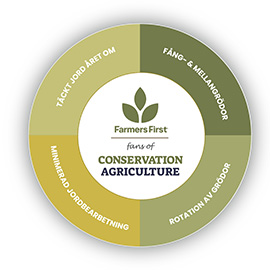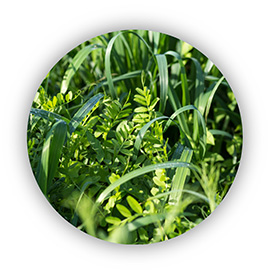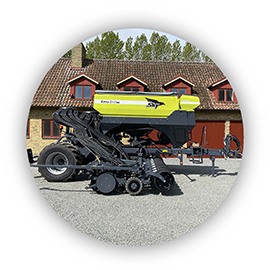
Benefits of Intercropping with Rapeseed
Intercropping offers several advantages for rapeseed cultivation:
- Protection against Pests: Intercropping can protect rapeseed from pests and make establishment easier.
- Concealing Rapeseed: Intercropped crops can mask the volatile compounds produced by rapeseed, which insects use to locate the crop. This can result in reduced insect infestations.
- Attracting Beneficial Insects: Intercropping crops can attract various specialized and generalist predatory insects that prey on attacking adult insects, as well as their eggs and larvae. When combined with minimal soil disturbance practices, the presence of these beneficial insects can be further encouraged.
- Enhancing Overall Soil Nutrition: Fast-growing annual legumes, used as intercrops, start fixing nitrogen within nine weeks. Once they are incorporated back into the soil, they release nitrogen and other essential nutrients for the rapeseed crop during the growing season.
- Improving Soil Health: Crops like clover and buckwheat can encourage mycorrhizal fungi and enhance soil function in other ways. Their root systems can help with drainage and improve soil structure.
- Protecting Rapeseed Growth: Many farmers have reported a reduction in pigeon grazing in fields where intercrops are used.
Another method of intercropping is to create a "living compost" by sowing the intercrop early, such as immediately after winter barley harvests. Rapeseed is then sown into this established intercrop. This approach promotes better soil health, suppresses initial weed growth, and improves moisture retention, all of which facilitate rapeseed establishment.
Example Seed Mixtures for Intercropping with Rapeseed
A mix containing clover, alexandrine clover, and common buckwheat.
- Triple mixture for maximum diversity and beneficial insect attraction.
- Suitable for complementing hybrid rapeseed.
- These three species offer various benefits and broad utility.
A mix containing alexandrine clover and common buckwheat.
- High buckwheat content for beneficial phosphate mobilization.
- Buckwheat is frost-sensitive and breaks down to facilitate competition during winter.
- A simple mix with good biodiversity and nutrient supply.
Advice for Sowing Intercrops
- Legumes are more suitable for intercropping with rapeseed than non-legumes.
- Intercrop crops should be spread on the seedbed before rapeseed sowing or at a shallow depth using a separate container on the seeder. Do not mix intercrop crops with rapeseed during sowing.
- Frost-sensitive legumes (pea, field bean) can counteract the negative environmental impact of rapeseed by reducing the need for mineral nitrogen fertilizers and pesticides.
- Rapeseed and legumes grow together until the legumes die from frost or are killed by herbicides during winter. The following spring, rapeseed grows as the sole crop in the field while the dead legumes continue to mineralize nitrogen.
- Under conditions without herbicide use, intercropping with a mixture of field pea, alexandrine clover, and fodder vetch led to a 20-75% reduction in weed presence compared to rapeseed grown as a monocrop.
- Intercropping rapeseed with field bean, lentils, or a combination of both can reduce nitrogen application by 30-40 kg per hectare without a significant reduction in rapeseed yield.
- Field beans' deep taproots can modify the rapeseed's root system, allowing for greater soil volume and nitrogen uptake.
- Other positive effects include increased biological activity and organic material in the soil, as well as reduced insect damage due to modified visual cues. The tall intercrop plants make it difficult for insects to recognize rapeseed before winter.
Sowing Timing for Intercrops
Early sowing is recommended for cold, clayey soils with low nitrogen content. Early sowing allows legumes more time to accumulate nitrogen. For lighter soils with high nitrogen content, later sowing is suitable. For clay-rich soil with high nitrogen content, slightly later sowing is recommended.
Simultaneous sowing of rapeseed and legumes is beneficial. Using the tractor and seeder once instead of twice reduces soil drying, which is favorable for rapeseed emergence. Additionally, establishment costs are lower.


